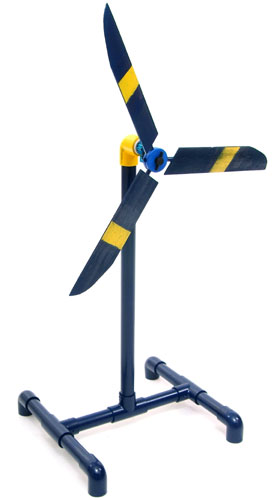
 When science teacher Michael Arquin started educating students about wind power, he had no idea his curriculum would come to influence thousands of teachers and students all across the country.
When science teacher Michael Arquin started educating students about wind power, he had no idea his curriculum would come to influence thousands of teachers and students all across the country.
After earning his B.S. in Biology and Environmental Studies from UC Boulder and a M.A.T. in Science Education from Cornell, Arquin, 37, taught for five years in Santa Catalina School in Monterey California. He left teaching in 2003 to pursue a fellowship at Tufts University. There he found his passion for wind energy coalescing into a bona fide project. As a fellow at the Wright Center for Science Education, Arquin formally founded the KidWind Project with the goal of developing curricula and simple wind turbine kits to improve the quality of wind energy science education throughout the U.S..
As KidWind evolved, Arquin began to see a dearth of classroom-appropriate wind energy hardware. “There were a lot of products out there but they were like 300, 500 dollars,” Arquin said. “Not anything you’d want to bring into a classroom.” As a result, he began making and selling more basic kits. One project requires students to modify and arrange the blades of a turbine, and measure the electrical output with a volt meter to determine the ideal configuration. Another tips its hat to windmills of old by seeing how much weight can be hoisted by wind power alone.
While not developing hardware, KidWind organizes workshops to help teachers develop their own science curricula. “During the summer we’ll hold 10 workshops all over the US,” Arquin explained. “We’ll go to, like, New York and for a day take 40 teachers and teach them about wind power, what goes on in the classroom, and take them on a tour of a wind farm.” He estimates KidWind has held over 60 workshops and other educational events with in excess of 1,800 attendees. Most of these have been teachers who have gone on to influence tens of thousands of students.
While his primary audience has been teachers, Arquin has made a point of finding out what appeals to students. He has separate lesson plans for elementary, middle school and secondary students, providing challenges for each age range without being too difficult. One welcome discovery was that wind energy’s humanitarian nature is particularly appealing to female students. Arquin noted that girls’ participation rates in technological subjects is traditionally very low. However, he found that framing challenges in terms of societal improvement, rather than technological prowess, appealed to these students. “Instead of saying, make the car go faster,” Arquin explained, “say make the ambulance travel in a more efficient way to pick up people, the girls will get into it. We have really high percentage of participation by girls.”
These days, KidWind’s online store takes up the majority of the organization’s time. It sells dozens of kits not only of wind projects but also related eco-friendly technologies like solar and fuel cell projects. He also features a small assortment of books. Arquin estimates over 5,000 kits of various types have been sold or distributed through workshops in the past two years.
In addition, the KidWind store sells individual parts in a manner Arquin likens to a surplus store. For instance, he developed a Tinker Toy-like turbine hub that allows students to quickly and safely swap in various types of turbine blades. Called a “crimping hub,” it locks down and prevents the blades from flying off.
Ultimately, however, the KidWind Project website is much more than an online store. With science fair ideas, lesson plans, pre-made presentations and bibliographies, Arquin’s organization aims to influence as many people as possible as early as possible to the possibilities of wind energy.
